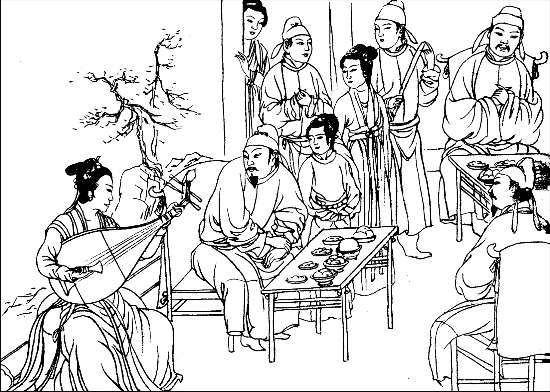Nanyin musical legacy lives on in Fujian

Nanyin played at Gu Hong's "Painting of Han Xi-zai's Evening Banquet" by Hong Zhixiong
Quanzhou, Fujian Province, is the cradle of the southern Fujian culture and Nanyin, or “southern music,” is a key part of southern Fujian culture.
Nanyin goes by many names, such as “Xianguan,” (meaning string and wind music). It is also known as “Quanzhou Nanyin” and is one of the oldest existing Chinese music genres. As such, it is known as “a living fossil in the history of Chinese music.” The Han immigrants in the Western and Eastern Han dynasties (206 BC-AD 220), the Wei and Jin dynasties (220-420), the Tang Dynasty (618-907) and the Northern and Southern Song dynasties (960-1279) brought musical culture from the Central Plain into Quanzhou to the center of the southern regions of Fujian. It integrated with local folk music and formed Nanyin which inherited the lingering charm of ancient music in the Central Plain.
An important feature of Nanyin is that it should be sung in the Quanzhou dialect. Nanyin has been transmitted from Fujian to Taiwan, Hong Kong, Macao and even overseas Chinese’ settlements in southeast Asia. Although its name has varied from place to place and has been renamed as southern music, southern wind music and southern opera, it is best performed in the genuine Quanzhou dialect and only in this way can it capture the beauty of ancient music.
As Nanyin has more than five names, which is the most appropriate? According to historical materials, the word “Nanyin” appeared in ancient times and generally referred to music or southern music. In the Dictionary of Chinese Music, Nanyin has the following meanings: First, it refers to southern music in the Zhou Dynasty (1046-256 BC) and was called “Nan” or south for short; second, Nanyin was regarded as ancient music in the pre-Qin period; third, it refers to southern opera in Fujian; fourth, it refers to a genre of Chinese folk art which was performed in the Guangzhou dialect without makeup or acting, popularized in the Pearl River Delta Region and has over a century of history.
To distinguish Quanzhou Nanyin from Guangdong Nanyin, Xianguan may be a more familiar name for people in Quanzhou and a better way to track its musical development in Quanzhou.
